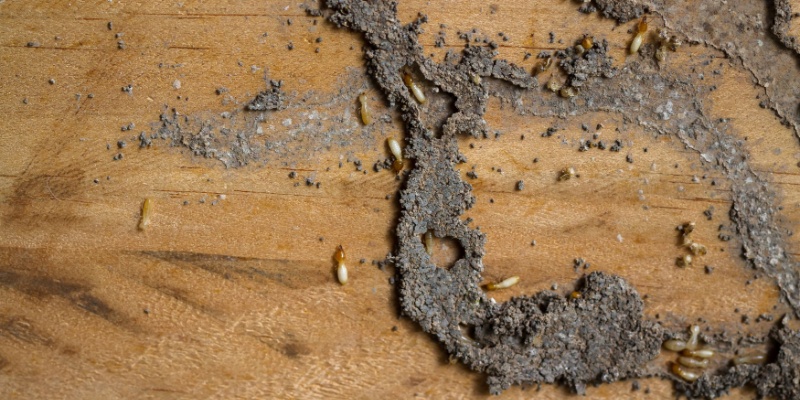Termites are one of the most destructive pests a homeowner can face. These tiny insects can cause significant damage to the structure of your home if left unchecked. Identifying a termite problem early can save you from costly repairs and extensive damage. But how do you know if you have termites in your home? Here are some key signs to look out for:
Common Signs of Termites
1. Mud Tubes
Termites often build mud tubes to travel between their colony and their food source. These tubes are made of soil, wood, and saliva and are usually found on walls, foundations, or in crawl spaces. If you spot mud tubes around your home, it's a strong indication of a termite infestation.
2. Discarded Wings
Termites swarm to mate and establish new colonies, particularly during the spring. After swarming, they shed their wings. Finding piles of discarded wings around windowsills, doorways, or other entry points is a clear sign of termites.
3. Hollow or Damaged Wood
Termites consume wood from the inside out, leaving a thin veneer of timber or paint. Tap on wood structures around your home, and if it sounds hollow or feels brittle, it could be a sign of termite activity. Damaged wood may also have maze-like patterns inside, where termites have eaten through.
4. Frass (Termite Droppings)
Drywood termites often leave behind small, pellet-like droppings known as frass. These can accumulate near infested wood and look like sawdust or coffee grounds. If you see these droppings, you likely have an active termite infestation.
5. Buckling or Blistered Wood
As termites consume wood, they can cause the material to warp or buckle. Blistering in wood flooring or walls can be an indicator of a termite problem. This damage can also resemble water damage, so it's important to have it inspected by a professional.
Why Professional Inspection is Crucial
While these signs can help you identify a potential termite problem, confirming the presence of termites often requires a professional inspection. Pest control experts have the tools and experience to accurately detect termite infestations and assess the extent of the damage.
Preventative Measures
1. Regular Inspections
Scheduling regular termite inspections can help catch an infestation early. Annual inspections are recommended, especially if you live in an area prone to termite activity.
2. Reduce Moisture
Termites are attracted to moisture. Fix any leaks and ensure your home has proper drainage. Use dehumidifiers in damp areas like basements and crawl spaces to reduce the moisture that can attract termites.
3. Proper Wood Storage
Avoid storing wood, lumber, or firewood near your home’s foundation. If you must store wood, keep it elevated and covered to minimize contact with the soil.
4. Seal Cracks and Gaps
Seal any cracks or gaps in your home's foundation, walls, and around utility pipes. This will help prevent termites from entering your home.
Call a Professional at the First Sign of Trouble
If you notice any signs of a termite infestation, contact a pest control professional immediately. Early detection and treatment can prevent significant damage to your home. Protect your investment by staying vigilant and proactive in termite prevention and control.

